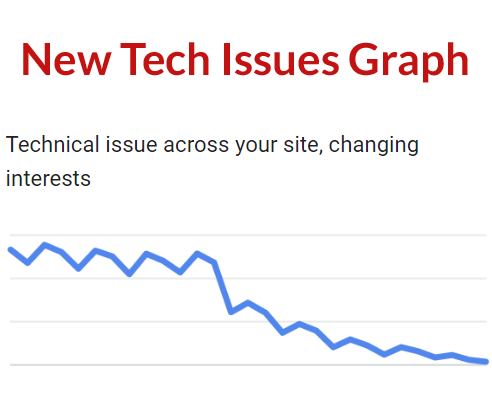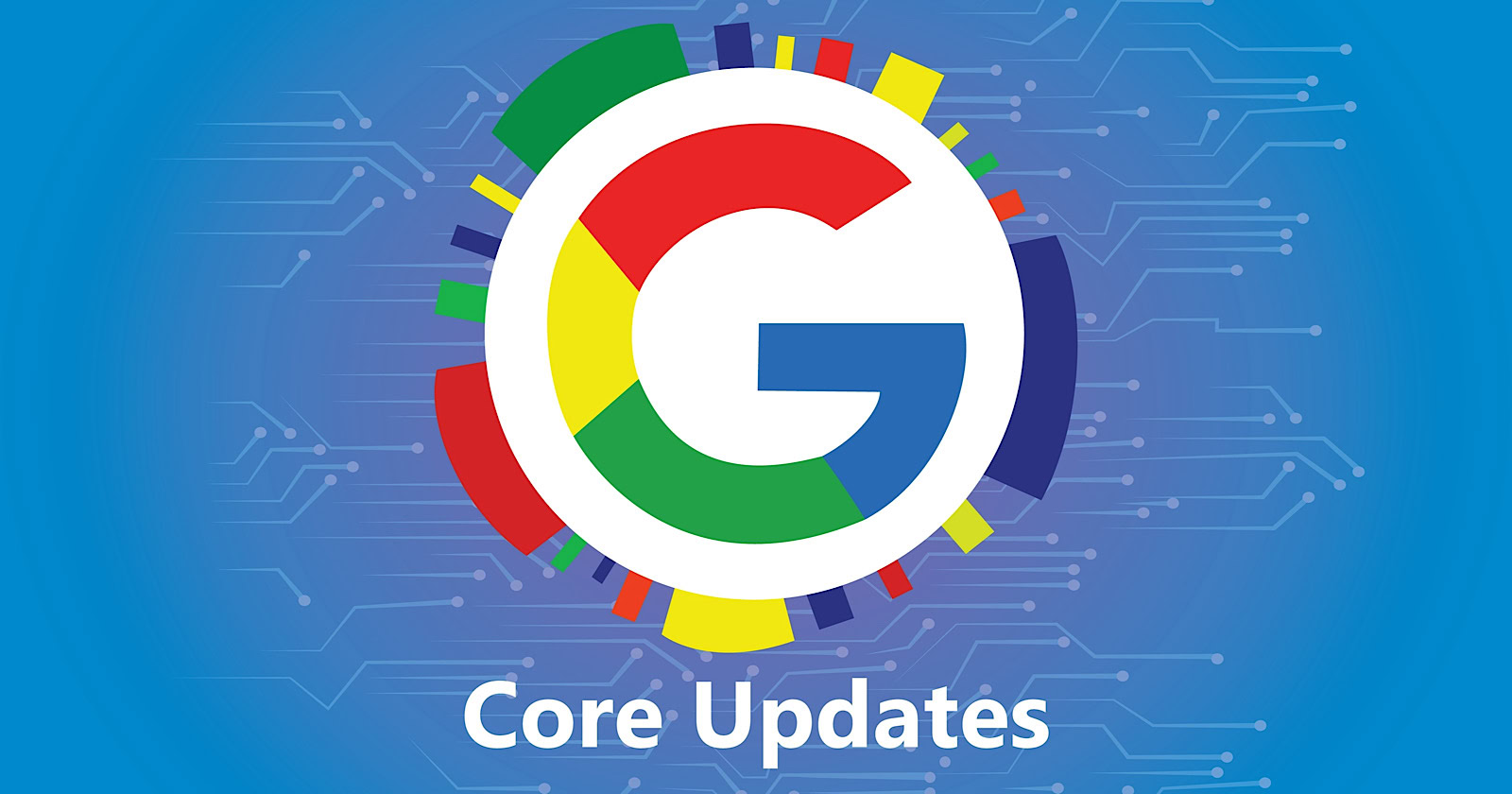SEO
Google Ranking Bug De-Ranks Sites On Weekends

Multiple Google support forum discussions call attention to a possible bug in Google’s algorithm that causes select generic top level domains (gTLDs) to disappear completely from the search engine results pages (SERPs). Multiple publishers with the same kind of gTLD are reporting the exact same Google Weekend Ranking Bug.
What they all have in common is the type of domain name and a complete disappearance from Google’s SERPs on the weekend, some unable to even rank for their site names.
This issue came to light in a tweet by Olesia Korobka (@Giridja):
The question is if all websites in .media, club, clinic etc experience the issue? Or could it be a mix of locality and tld or something else?https://t.co/kehMg3phLS
— 🐝 Olesia Korobka 💙💛🐝 (@Giridja) January 16, 2024
These issues are affecting a form of gTLDs that are also known as ICANN-era generic top-level domains. These are domains like .academy, .car, .care, etc.
The person who recently reported the issue shared a graph showing traffic to the site crashing approximately every weekend then returning on Monday. They reported that this pattern began in November.
Is This A Quality Issue?
In my opinion this does not resemble a quality issue. A quality issue affects rankings every day of the week, all month long.
The Google Weekend Ranking Bug is limited to certain kinds of domains and only on the weekends.
Is This A Cyclical Issue?
A reasonable assumption is that maybe traffic dries up on the weekend, that’s entirely normal, right?
But it’s not just traffic that’s declining on the weekends, it’s the actual rankings, including the name of the website. It seems like a complete de-indexing every weekend. Additionally, this appears to be happening to specific kinds of generic top level domains.
So no, this is not a normal weekend traffic phenomenon.
Google Weekend Ranking Bug
The person posting the support question for Google listed 14 URLs of other support threads related to gTLDs that were experiencing similar problems, of which nine out of the 14, 64%, were from January 2024 and the earliest listed was from 11/24/2023.
We can’t assume that’s a complete list of support threads on this topic but it does seem extraordinary that there are so many from this year that are experiencing the same odd pattern of weekend de-indexing and that it’s happening to these specific kinds of keyword gTLDs.
A Sample Of Ranking Anomaly Reports
From 1/3/2024, A publisher with a .consulting gTLD wrote:
“Our company website seems to be disappearing from Google search engine results every couple of days, resulting in a significant loss of traffic. None of our web pages are showing up on Google during these periods, and we’re struggling to understand the root cause of this recurrent issue.”
From late December, another publisher with a .club gTLD shared a screenshot from their Search Console showing a similar crash and rank cycle.
Screenshot Of De-indexing Pattern

From 12/15/2023:
“Traffic drops every weekend
Since 2 weeks our traffic started dropping down every weekend.
It’s not so much the drop – less traffic on the weekend is normal. It’s the context that is very strage: we noticed that pages from our site don’t show up for keywords they normally rank for very well. This includes our brand name; the site disappears from the SERPs around Friday and is back on Sunday/Monday.”
From January 5, 2024:
“My site loses its position on the Google results page several days on a week!
After November 22, 2023 this site: (redacted for privacy) lost it’s position on SERP for few days and came back to normal on November 22! This happened on December 7 and back to normal on December 11 again(!) and repeated 4 more time until now!
During this, I checked all probabilities like: There is no issues on manual actions and security issues report. There is no critical issues on any report on GSC.
Also in URL Inspection (Google index and live test) report, (redacted for privacy) is on Google and also available to Google. This site was performing good about 2 years before this problem and reached 60k click on 28 days!
Notice that when this problem happened, “sitemap read” list is get empty but I’m not sure this is the issue or not!”
From January 5, 2024 a publisher with a .care gTLD experiencing the same problem responded to a support thread about this issue:
“100% same problem – also other German and international cases.
As you said: experts are ignoring the fact of the site’s periodic return to its previous positions and that sites of no better quality replace the site that dropped out.”
There’s another one from January 8, 2024 that is on the .life gTLD:
“Randomly daily index/deindex our site + impact on Business profile
Hello,
From end of November we experience strange result in our Performances report, it’s not a seasonal drop.
We don’t have any issue in Manual actions nor in Security issues indexing looks normal.”
That person posted a screenshot:
Screenshot Of Weekend Ranking Losses


Why Are Websites Dropping Out On The Weekends?
There’s an old problem dating back to the earliest days of Google where a domain would get stuck in a ranking loop and get de-indexed for a month and then return for a week and then disappear all over again, not even ranking for its domain name. I first saw this around 2003 or 2004 and the cause of it was that the domain had a history of spam and for some reason that status wouldn’t go away. Google never acknowledged the problem until twenty years later. I was calling it a Legacy Domain Penalty.
Google’s John Mueller commented about the Legacy Domain Penalty:
“The other thing that I’ve very, very rarely seen, is that a site gets stuck in some kind of a weird in-between state in our systems in that…
…at some point our algorithms reviewed the website and found it to be absolutely terrible and uh for whatever reason those parts of the algorithms just took a very long time to be updated again.”
Although there’s a similarity between the ICANN-era gTLD rank and crash pattern and the legacy domain penalty, I suspect they are probably not the same issue. These are all fitting a pattern of specifically ICANN-era domains that are experiencing a de-indexing on the weekends. The legacy domain penalty was a de-indexing that happened all month long except for a few days once a month.
Whatever it is, it sounds like it could be a bug in Google’s systems due to something new that was introduced into their algorithms that is now having an unintended effect.
Read the original support thread here:
Intermittent Disappearance of Website from Google Search Results
Featured Image by Shutterstock/Jaaak
SEO
Big Update To Google’s Ranking Drop Documentation

Google updated their guidance with five changes on how to debug ranking drops. The new version contains over 400 more words that address small and large ranking drops. There’s room to quibble about some of the changes but overall the revised version is a step up from what it replaced.
Change# 1: Downplays Fixing Traffic Drops
The opening sentence was changed so that it offers less hope for bouncing back from an algorithmic traffic drop. Google also joined two sentences into one sentence in the revised version of the documentation.
The documentation previously said that most traffic drops can be reversed and that identifying the reasons for a drop aren’t straightforward. The part about most of them can be reversed was completely removed.
Here is the original two sentences:
“A drop in organic Search traffic can happen for several reasons, and most of them can be reversed. It may not be straightforward to understand what exactly happened to your site”
Now there’s no hope offered for “most of them can be reversed” and more emphasis on understanding what happened is not straightforward.
This is the new guidance
“A drop in organic Search traffic can happen for several reasons, and it may not be straightforward to understand what exactly happened to your site.”
Change #2 Security Or Spam Issues
Google updated the traffic graph illustrations so that they precisely align with the causes for each kind of traffic decline.
The previous version of the graph was labeled:
“Site-level technical issue (Manual Action, strong algorithmic changes)”
The problem with the previous label is that manual actions and strong algorithmic changes are not technical issues and the new version fixes that issue.
The updated version now reads:
“Large drop from an algorithmic update, site-wide security or spam issue”
Change #3 Technical Issues
There’s one more change to a graph label, also to make it more accurate.
This is how the previous graph was labeled:
“Page-level technical issue (algorithmic changes, market disruption)”
The updated graph is now labeled:
“Technical issue across your site, changing interests”
Now the graph and label are more specific as a sitewide change and “changing interests” is more general and covers a wider range of changes than market disruption. Changing interests includes market disruption (where a new product makes a previous one obsolete or less desirable) but it also includes products that go out of style or loses their trendiness.

Change #4 Google Adds New Guidance For Algorithmic Changes
The biggest change by far is their brand new section for algorithmic changes which replaces two smaller sections, one about policy violations and manual actions and a second one about algorithm changes.
The old version of this one section had 108 words. The updated version contains 443 words.
A section that’s particularly helpful is where the guidance splits algorithmic update damage into two categories.
Two New Categories:
- Small drop in position? For example, dropping from position 2 to 4.
- Large drop in position? For example, dropping from position 4 to 29.
The two new categories are perfect and align with what I’ve seen in the search results for sites that have lost rankings. The reasons for dropping up and down within the top ten are different from the reasons why a site drops completely out of the top ten.
I don’t agree with the guidance for large drops. They recommend reviewing your site for large drops, which is good advice for some sites that have lost rankings. But in other cases there’s nothing wrong with the site and this is where less experienced SEOs tend to be unable to fix the problems because there’s nothing wrong with the site. Recommendations for improving EEAT, adding author bios or filing link disavows do not solve what’s going on because there’s nothing wrong with the site. The problem is something else in some of the cases.
Here is the new guidance for debugging search position drops:
“Algorithmic update
Google is always improving how it assesses content and updating its search ranking and serving algorithms accordingly; core updates and other smaller updates may change how some pages perform in Google Search results. We post about notable improvements to our systems on our list of ranking updates page; check it to see if there’s anything that’s applicable to your site.If you suspect a drop in traffic is due to an algorithmic update, it’s important to understand that there might not be anything fundamentally wrong with your content. To determine whether you need to make a change, review your top pages in Search Console and assess how they were ranking:
Small drop in position? For example, dropping from position 2 to 4.
Large drop in position? For example, dropping from position 4 to 29.Keep in mind that positions aren’t static or fixed in place. Google’s search results are dynamic in nature because the open web itself is constantly changing with new and updated content. This constant change can cause both gains and drops in organic Search traffic.
Small drop in position
A small drop in position is when there’s a small shift in position in the top results (for example, dropping from position 2 to 4 for a search query). In Search Console, you might see a noticeable drop in traffic without a big change in impressions.Small fluctuations in position can happen at any time (including moving back up in position, without you needing to do anything). In fact, we recommend avoiding making radical changes if your page is already performing well.
Large drop in position
A large drop in position is when you see a notable drop out of the top results for a wide range of terms (for example, dropping from the top 10 results to position 29).In cases like this, self-assess your whole website overall (not just individual pages) to make sure it’s helpful, reliable and people-first. If you’ve made changes to your site, it may take time to see an effect: some changes can take effect in a few days, while others could take several months. For example, it may take months before our systems determine that a site is now producing helpful content in the long term. In general, you’ll likely want to wait a few weeks to analyze your site in Search Console again to see if your efforts had a beneficial effect on ranking position.
Keep in mind that there’s no guarantee that changes you make to your website will result in noticeable impact in search results. If there’s more deserving content, it will continue to rank well with our systems.”
Change #5 Trivial Changes
The rest of the changes are relatively trivial but nonetheless makes the documentation more precise.
For example, one of the headings was changed from this:
You recently moved your site
To this new heading:
Site moves and migrations
Google’s Updated Ranking Drops Documentation
Google’s updated documentation is a well thought out but I think that the recommendations for large algorithmic drops are helpful for some cases and not helpful for other cases. I have 25 years of SEO experience and have experienced every single Google algorithm update. There are certain updates where the problem is not solved by trying to fix things and Google’s guidance used to be that sometimes there’s nothing to fix. The documentation is better but in my opinion it can be improved even further.
Read the new documentation here:
Debugging drops in Google Search traffic
Review the previous documentation:
Internet Archive Wayback Machine: Debugging drops in Google Search traffic
Featured Image by Shutterstock/Tomacco
SEO
Google March 2024 Core Update Officially Completed A Week Ago

Google has officially completed its March 2024 Core Update, ending over a month of ranking volatility across the web.
However, Google didn’t confirm the rollout’s conclusion on its data anomaly page until April 26—a whole week after the update was completed on April 19.
Many in the SEO community had been speculating for days about whether the turbulent update had wrapped up.
The delayed transparency exemplifies Google’s communication issues with publishers and the need for clarity during core updates
Google March 2024 Core Update Timeline & Status
First announced on March 5, the core algorithm update is complete as of April 19. It took 45 days to complete.
Unlike more routine core refreshes, Google warned this one was more complex.
Google’s documentation reads:
“As this is a complex update, the rollout may take up to a month. It’s likely there will be more fluctuations in rankings than with a regular core update, as different systems get fully updated and reinforce each other.”
The aftershocks were tangible, with some websites reporting losses of over 60% of their organic search traffic, according to data from industry observers.
The ripple effects also led to the deindexing of hundreds of sites that were allegedly violating Google’s guidelines.
Addressing Manipulation Attempts
In its official guidance, Google highlighted the criteria it looks for when targeting link spam and manipulation attempts:
- Creating “low-value content” purely to garner manipulative links and inflate rankings.
- Links intended to boost sites’ rankings artificially, including manipulative outgoing links.
- The “repurposing” of expired domains with radically different content to game search visibility.
The updated guidelines warn:
“Any links that are intended to manipulate rankings in Google Search results may be considered link spam. This includes any behavior that manipulates links to your site or outgoing links from your site.”
John Mueller, a Search Advocate at Google, responded to the turbulence by advising publishers not to make rash changes while the core update was ongoing.
However, he suggested sites could proactively fix issues like unnatural paid links.
“If you have noticed things that are worth improving on your site, I’d go ahead and get things done. The idea is not to make changes just for search engines, right? Your users will be happy if you can make things better even if search engines haven’t updated their view of your site yet.”
Emphasizing Quality Over Links
The core update made notable changes to how Google ranks websites.
Most significantly, Google reduced the importance of links in determining a website’s ranking.
In contrast to the description of links as “an important factor in determining relevancy,” Google’s updated spam policies stripped away the “important” designation, simply calling links “a factor.”
This change aligns with Google’s Gary Illyes’ statements that links aren’t among the top three most influential ranking signals.
Instead, Google is giving more weight to quality, credibility, and substantive content.
Consequently, long-running campaigns favoring low-quality link acquisition and keyword optimizations have been demoted.
With the update complete, SEOs and publishers are left to audit their strategies and websites to ensure alignment with Google’s new perspective on ranking.
Core Update Feedback
Google has opened a ranking feedback form related to this core update.
You can use this form until May 31 to provide feedback to Google’s Search team about any issues noticed after the core update.
While the feedback provided won’t be used to make changes for specific queries or websites, Google says it may help inform general improvements to its search ranking systems for future updates.
Google also updated its help documentation on “Debugging drops in Google Search traffic” to help people understand ranking changes after a core update.
Featured Image: Rohit-Tripathi/Shutterstock
FAQ
After the update, what steps should websites take to align with Google’s new ranking criteria?
After Google’s March 2024 Core Update, websites should:
- Improve the quality, trustworthiness, and depth of their website content.
- Stop heavily focusing on getting as many links as possible and prioritize relevant, high-quality links instead.
- Fix any shady or spam-like SEO tactics on their sites.
- Carefully review their SEO strategies to ensure they follow Google’s new guidelines.
SEO
Google Declares It The “Gemini Era” As Revenue Grows 15%

Alphabet Inc., Google’s parent company, announced its first quarter 2024 financial results today.
While Google reported double-digit growth in key revenue areas, the focus was on its AI developments, dubbed the “Gemini era” by CEO Sundar Pichai.
The Numbers: 15% Revenue Growth, Operating Margins Expand
Alphabet reported Q1 revenues of $80.5 billion, a 15% increase year-over-year, exceeding Wall Street’s projections.
Net income was $23.7 billion, with diluted earnings per share of $1.89. Operating margins expanded to 32%, up from 25% in the prior year.
Ruth Porat, Alphabet’s President and CFO, stated:
“Our strong financial results reflect revenue strength across the company and ongoing efforts to durably reengineer our cost base.”
Google’s core advertising units, such as Search and YouTube, drove growth. Google advertising revenues hit $61.7 billion for the quarter.
The Cloud division also maintained momentum, with revenues of $9.6 billion, up 28% year-over-year.
Pichai highlighted that YouTube and Cloud are expected to exit 2024 at a combined $100 billion annual revenue run rate.
Generative AI Integration in Search
Google experimented with AI-powered features in Search Labs before recently introducing AI overviews into the main search results page.
Regarding the gradual rollout, Pichai states:
“We are being measured in how we do this, focusing on areas where gen AI can improve the Search experience, while also prioritizing traffic to websites and merchants.”
Pichai reports that Google’s generative AI features have answered over a billion queries already:
“We’ve already served billions of queries with our generative AI features. It’s enabling people to access new information, to ask questions in new ways, and to ask more complex questions.”
Google reports increased Search usage and user satisfaction among those interacting with the new AI overview results.
The company also highlighted its “Circle to Search” feature on Android, which allows users to circle objects on their screen or in videos to get instant AI-powered answers via Google Lens.
Reorganizing For The “Gemini Era”
As part of the AI roadmap, Alphabet is consolidating all teams building AI models under the Google DeepMind umbrella.
Pichai revealed that, through hardware and software improvements, the company has reduced machine costs associated with its generative AI search results by 80% over the past year.
He states:
“Our data centers are some of the most high-performing, secure, reliable and efficient in the world. We’ve developed new AI models and algorithms that are more than one hundred times more efficient than they were 18 months ago.
How Will Google Make Money With AI?
Alphabet sees opportunities to monetize AI through its advertising products, Cloud offerings, and subscription services.
Google is integrating Gemini into ad products like Performance Max. The company’s Cloud division is bringing “the best of Google AI” to enterprise customers worldwide.
Google One, the company’s subscription service, surpassed 100 million paid subscribers in Q1 and introduced a new premium plan featuring advanced generative AI capabilities powered by Gemini models.
Future Outlook
Pichai outlined six key advantages positioning Alphabet to lead the “next wave of AI innovation”:
- Research leadership in AI breakthroughs like the multimodal Gemini model
- Robust AI infrastructure and custom TPU chips
- Integrating generative AI into Search to enhance the user experience
- A global product footprint reaching billions
- Streamlined teams and improved execution velocity
- Multiple revenue streams to monetize AI through advertising and cloud
With upcoming events like Google I/O and Google Marketing Live, the company is expected to share further updates on its AI initiatives and product roadmap.
Featured Image: Sergei Elagin/Shutterstock
-

 WORDPRESS7 days ago
WORDPRESS7 days ago13 Best HubSpot Alternatives for 2024 (Free + Paid)
-

 MARKETING6 days ago
MARKETING6 days agoAdvertising in local markets: A playbook for success
-

 SEARCHENGINES6 days ago
SEARCHENGINES6 days agoGoogle Core Update Flux, AdSense Ad Intent, California Link Tax & More
-

 SEARCHENGINES5 days ago
SEARCHENGINES5 days agoGoogle Needs Very Few Links To Rank Pages; Links Are Less Important
-

 SEO5 days ago
SEO5 days agoHow to Become an SEO Lead (10 Tips That Advanced My Career)
-

 MARKETING5 days ago
MARKETING5 days agoHow to Use AI For a More Effective Social Media Strategy, According to Ross Simmonds
-

 PPC4 days ago
PPC4 days ago10 Most Effective Franchise Marketing Strategies
-

 SEARCHENGINES3 days ago
SEARCHENGINES3 days agoGoogle Won’t Change The 301 Signals For Ranking & SEO








![The Current State of Google’s Search Generative Experience [What It Means for SEO in 2024] person typing on laptop with](https://articles.entireweb.com/wp-content/uploads/2024/04/The-Current-State-of-Googles-Search-Generative-Experience-What-It.webp-400x240.webp)
![The Current State of Google’s Search Generative Experience [What It Means for SEO in 2024] person typing on laptop with](https://articles.entireweb.com/wp-content/uploads/2024/04/The-Current-State-of-Googles-Search-Generative-Experience-What-It.webp-80x80.webp)





